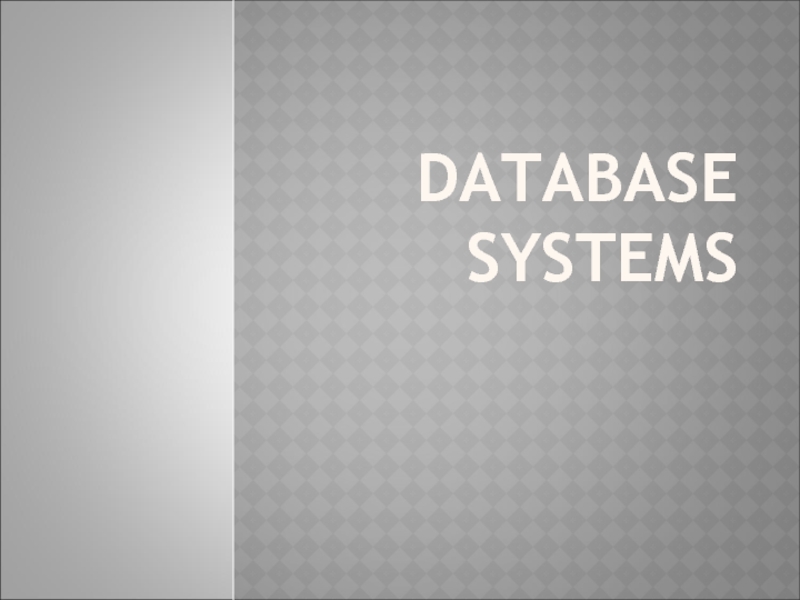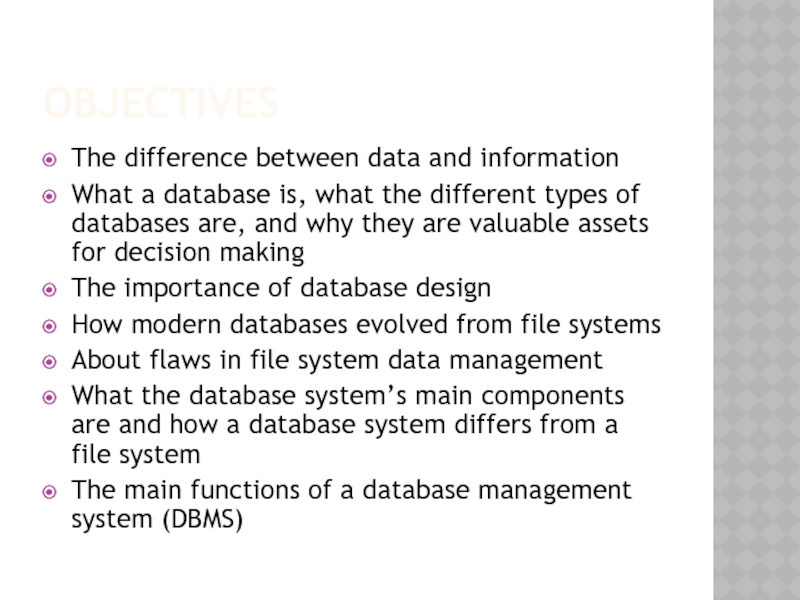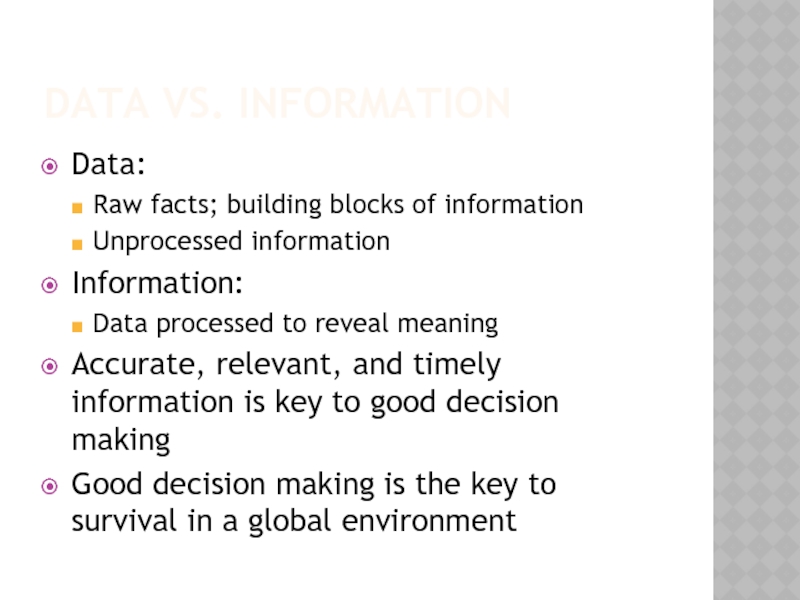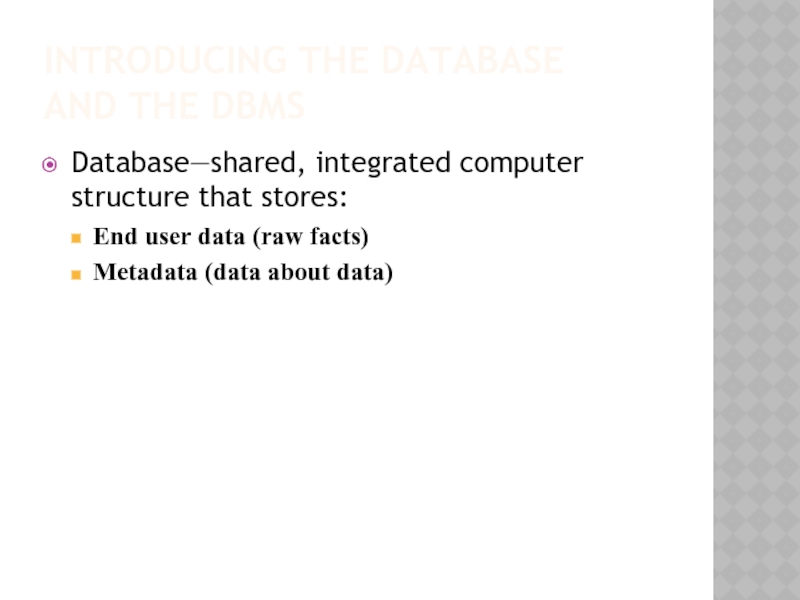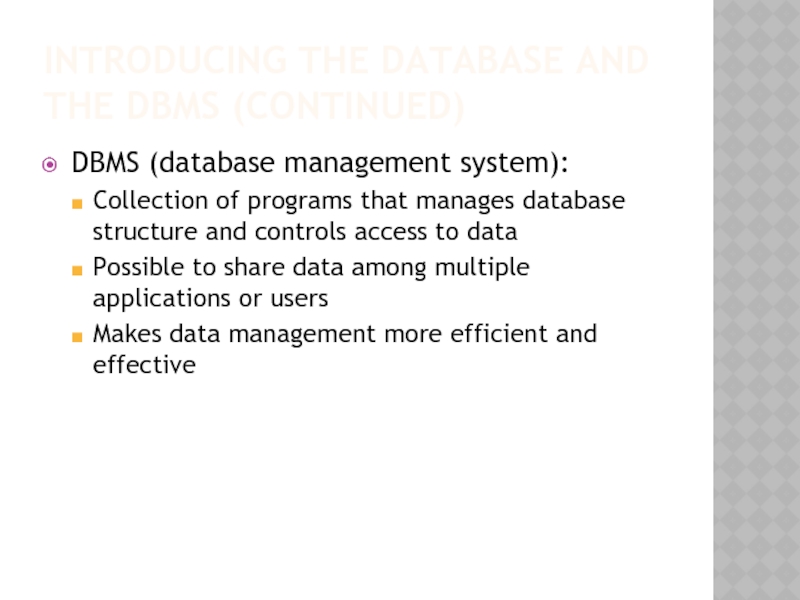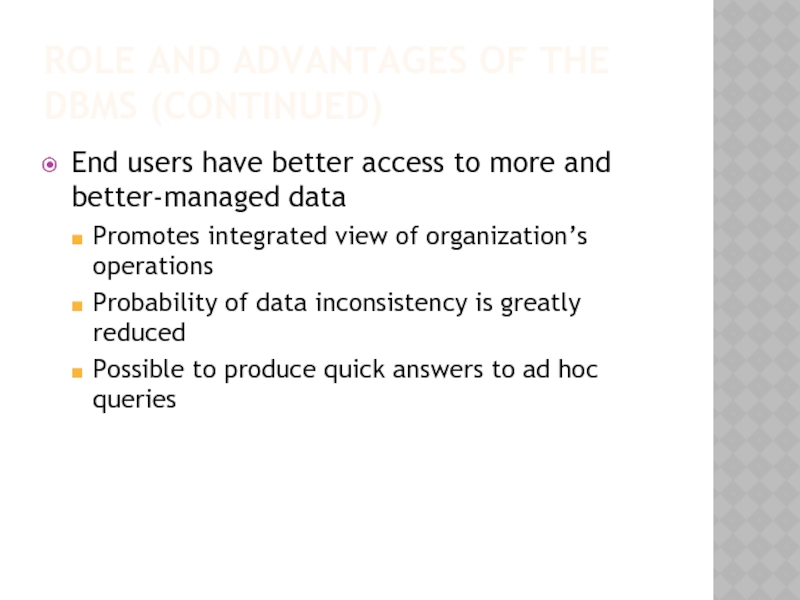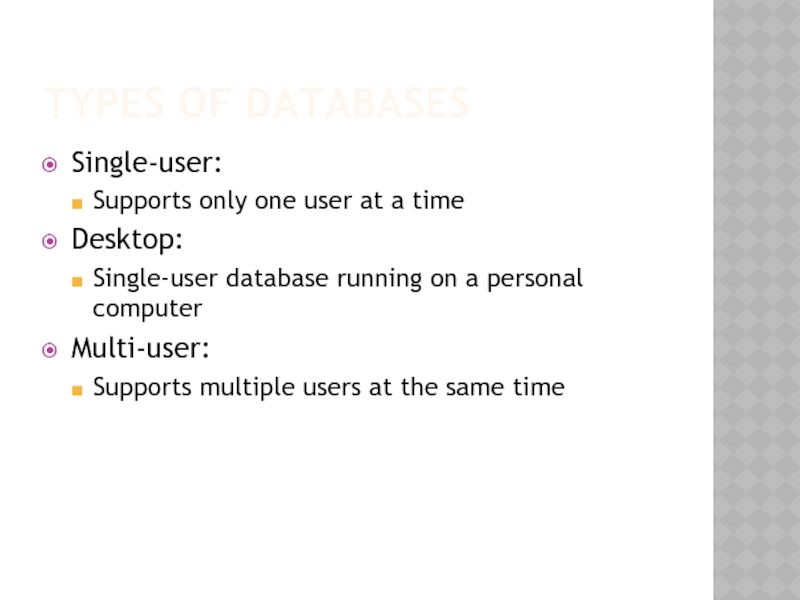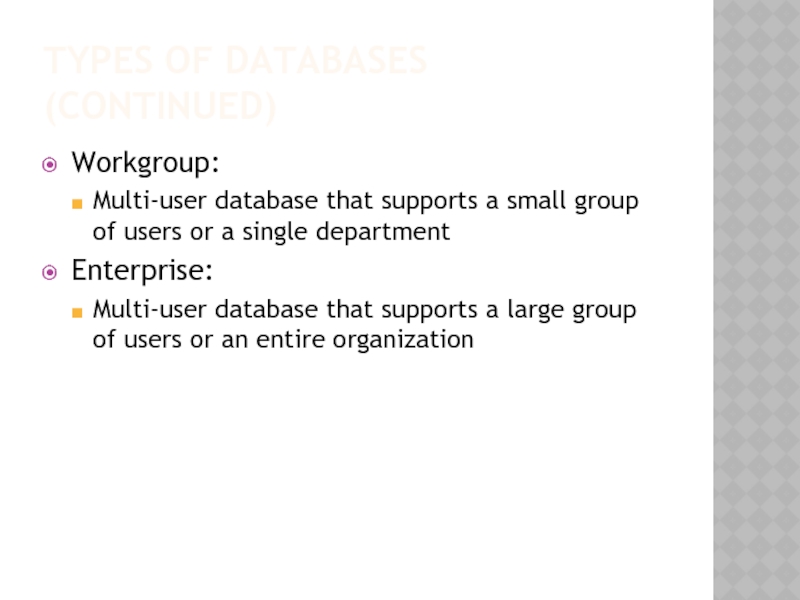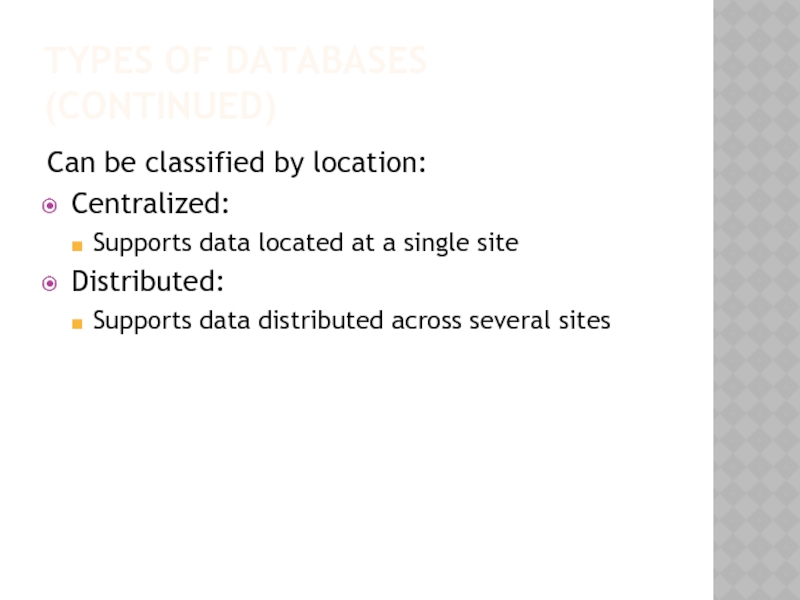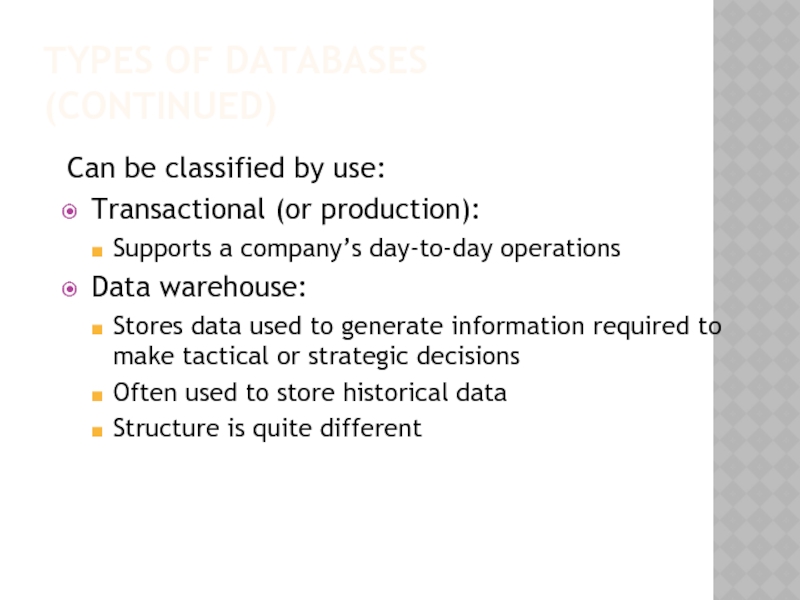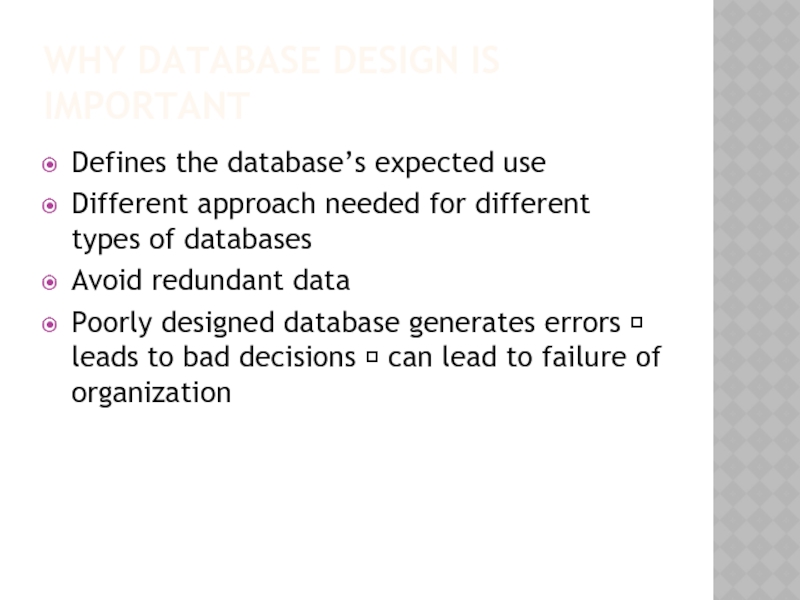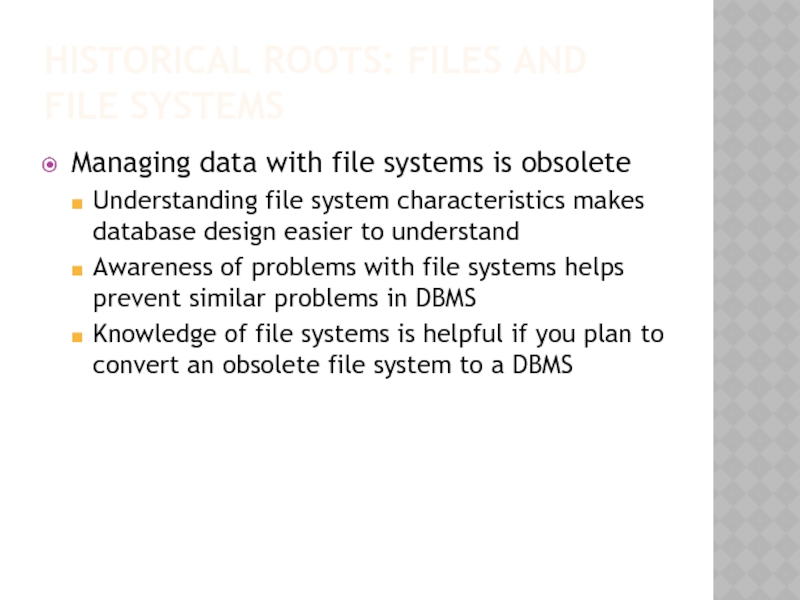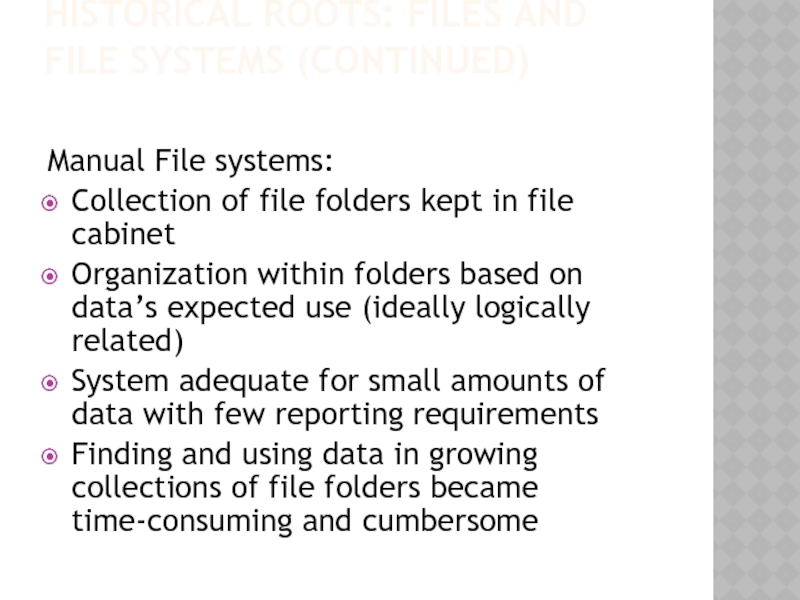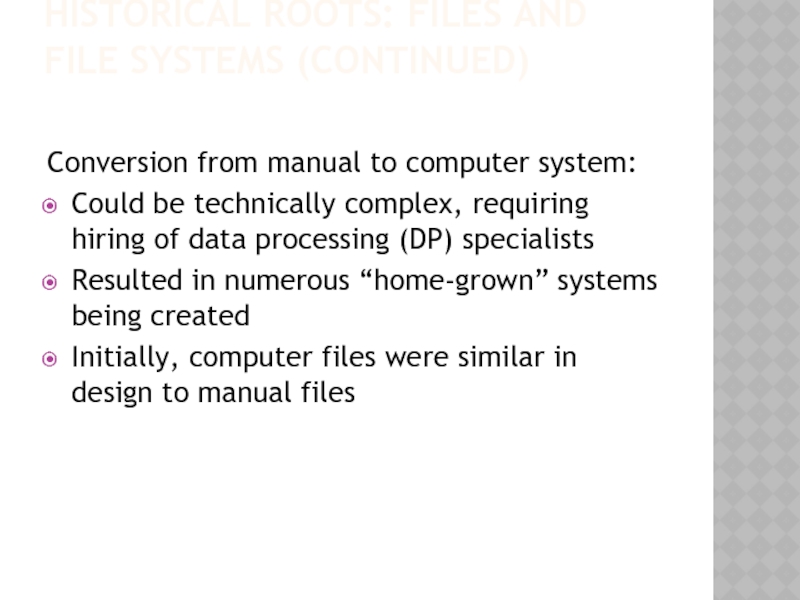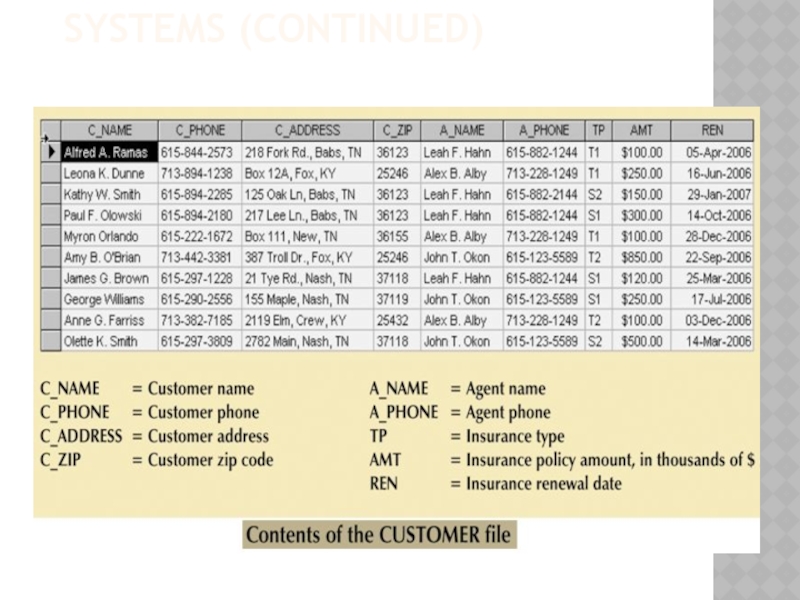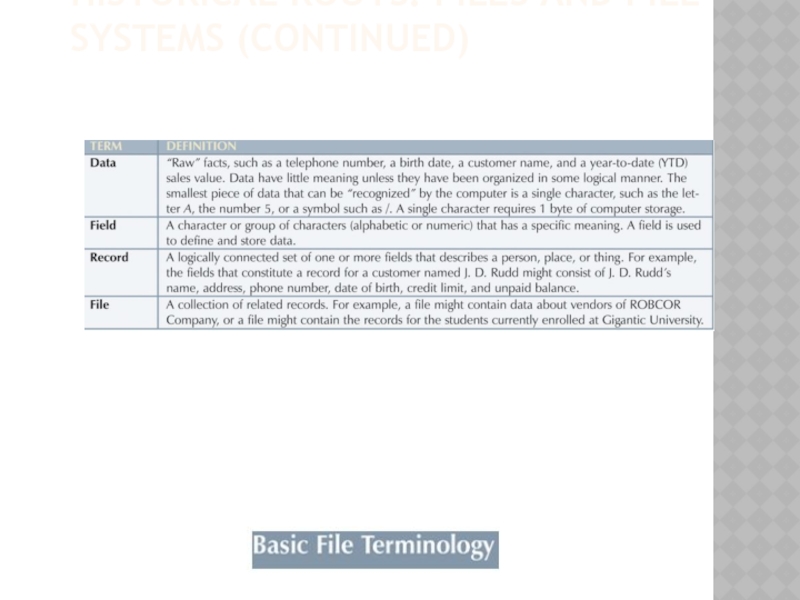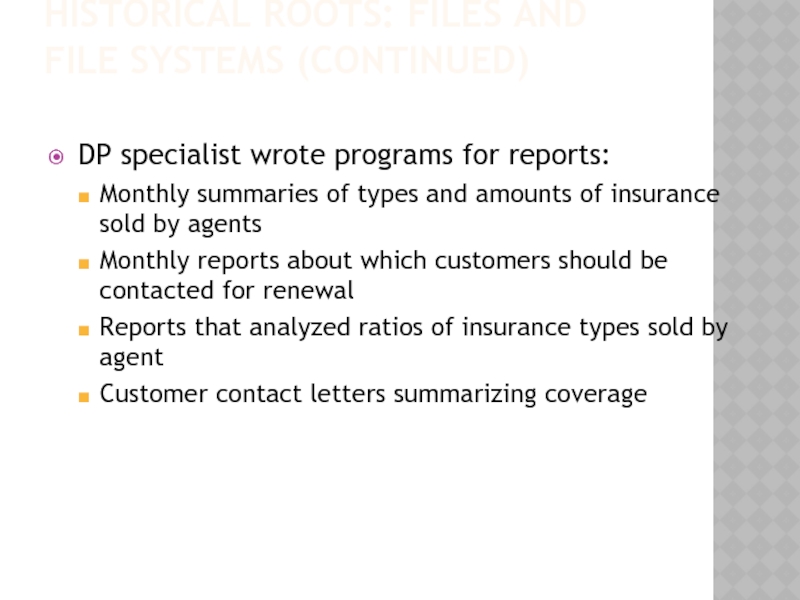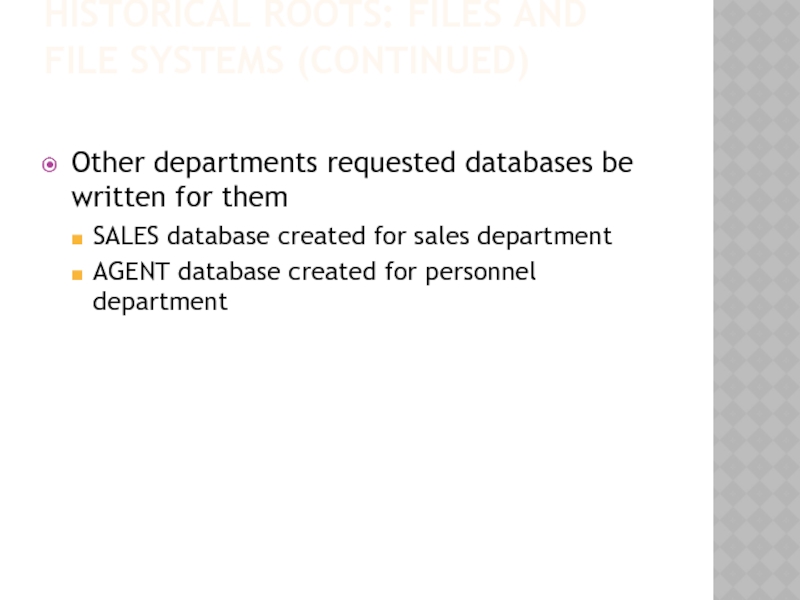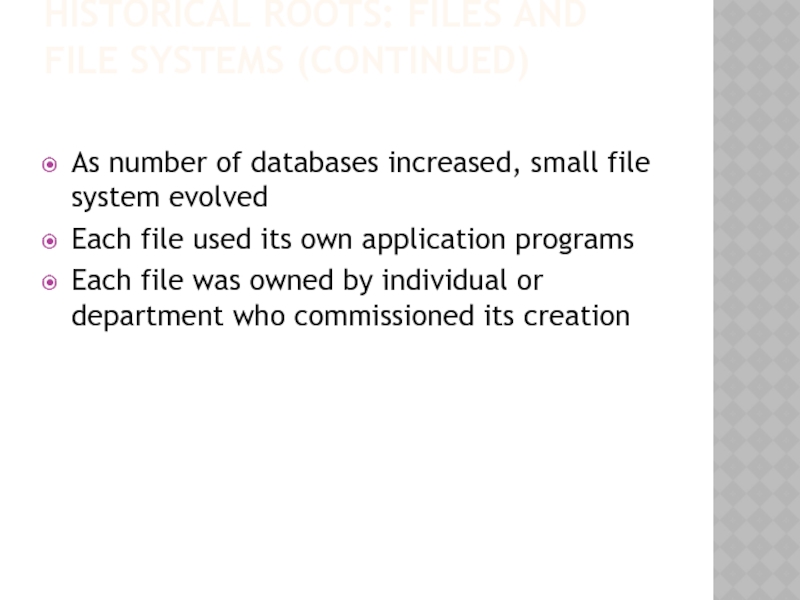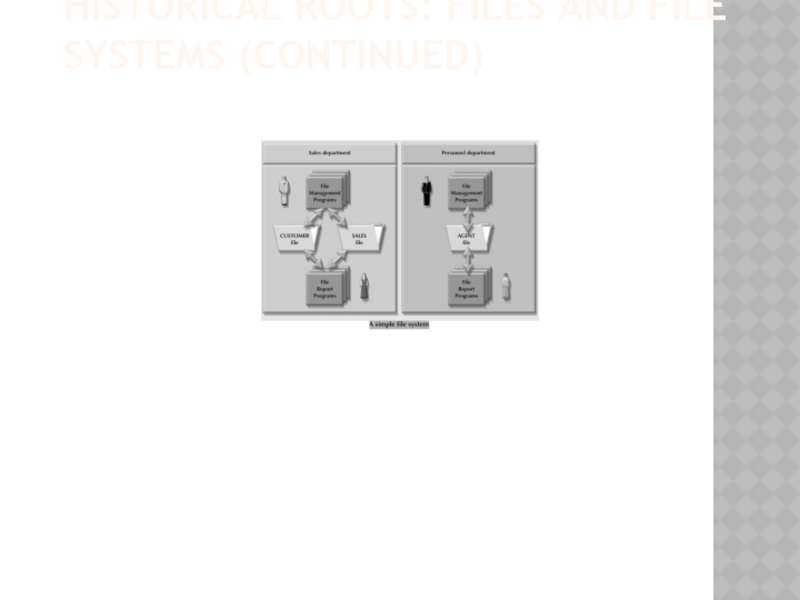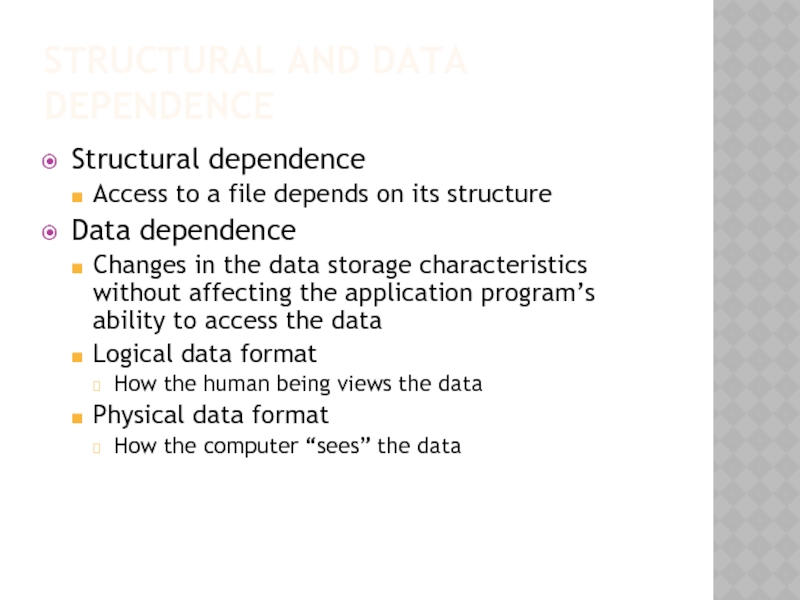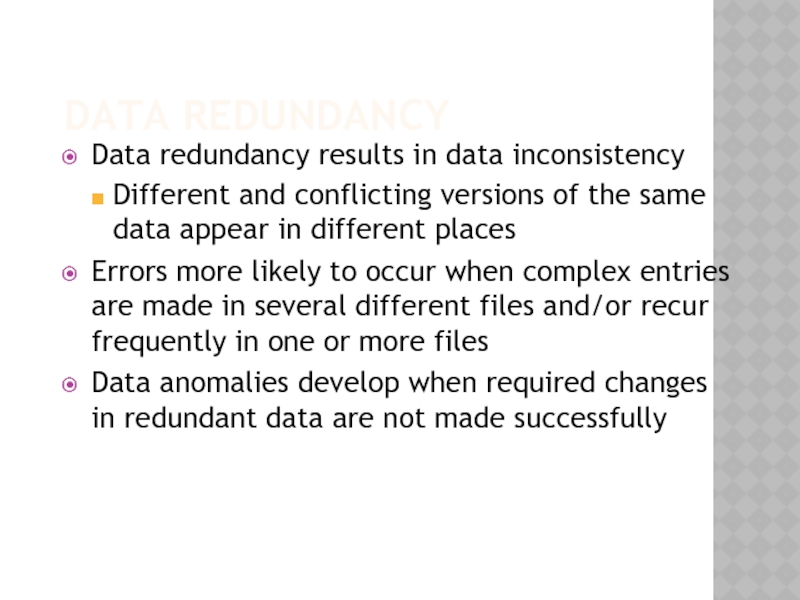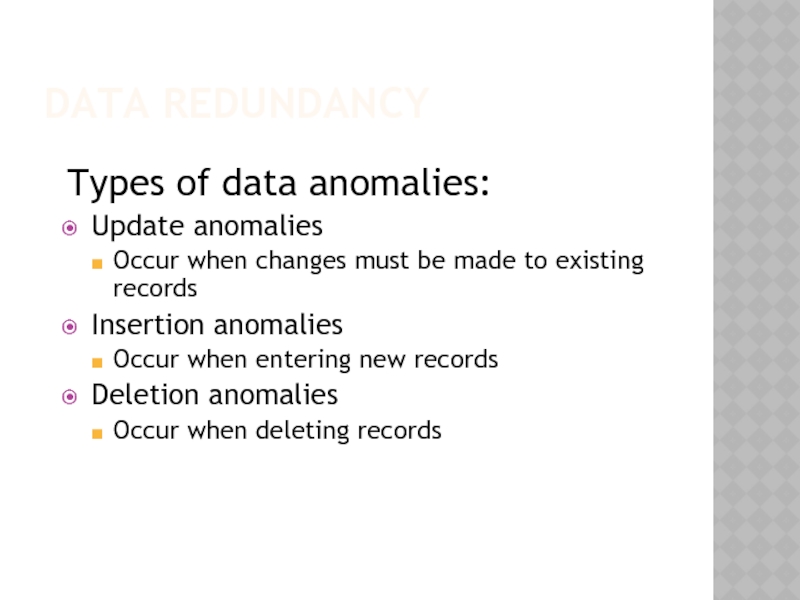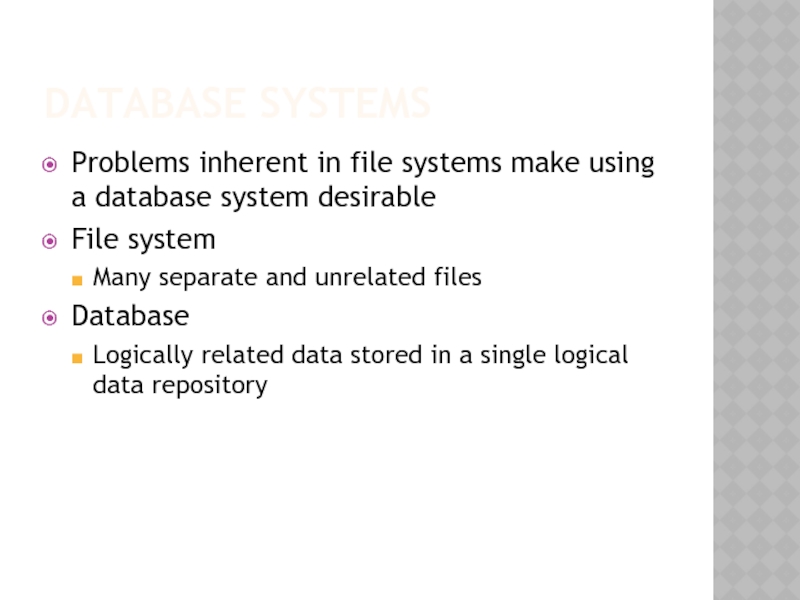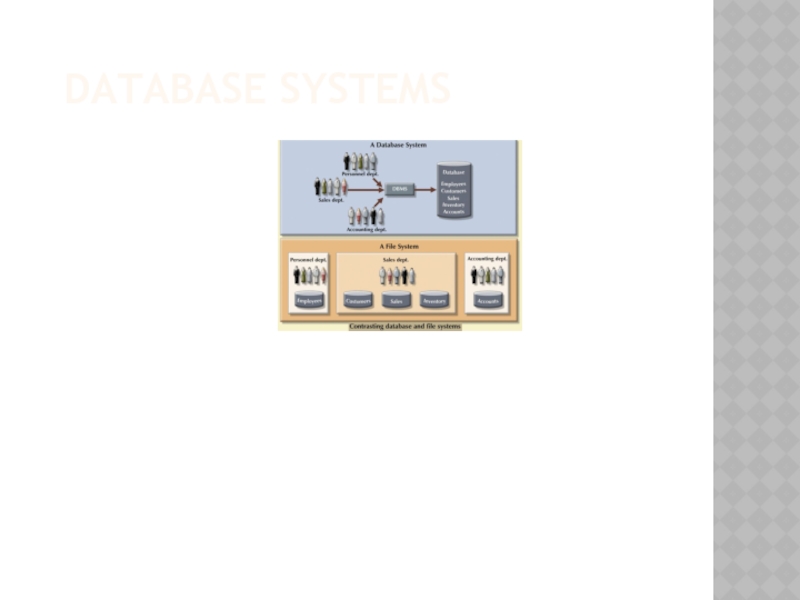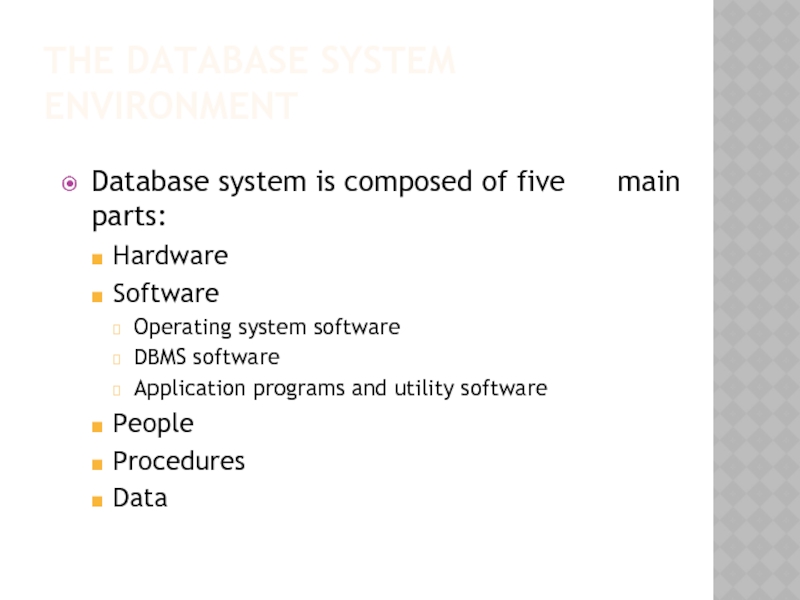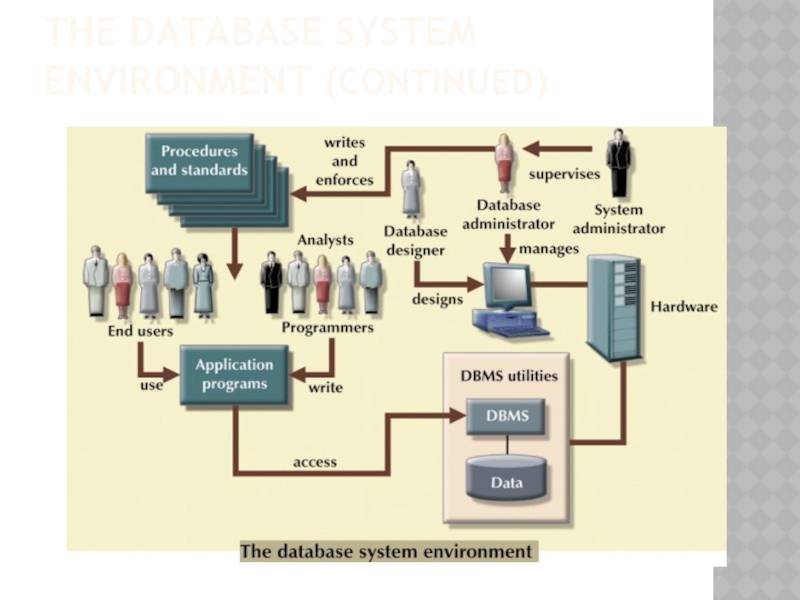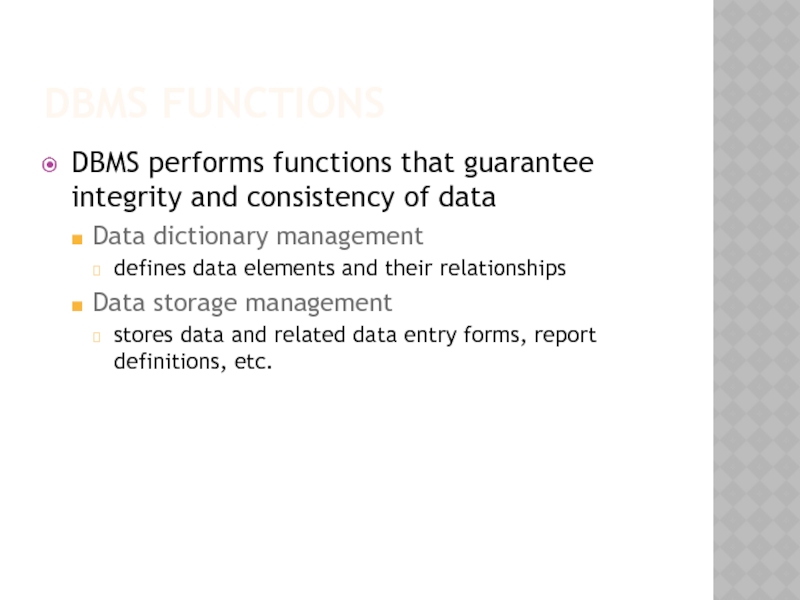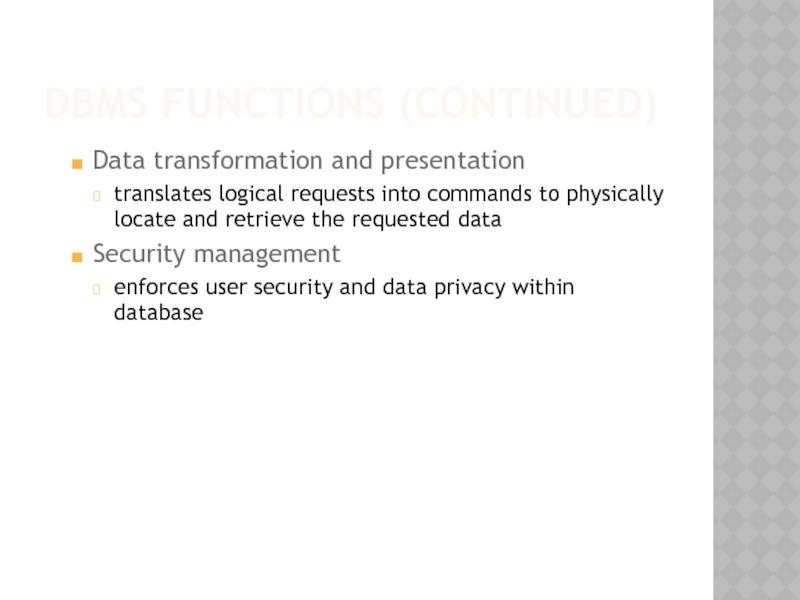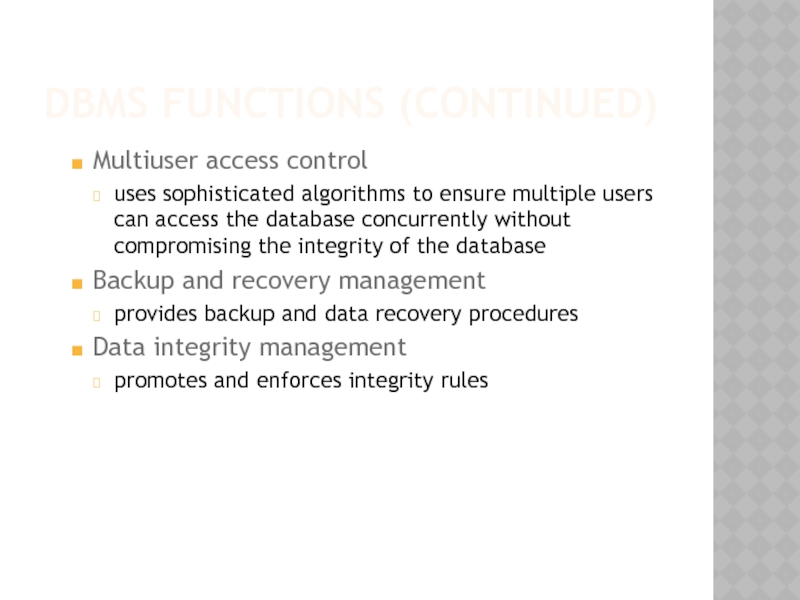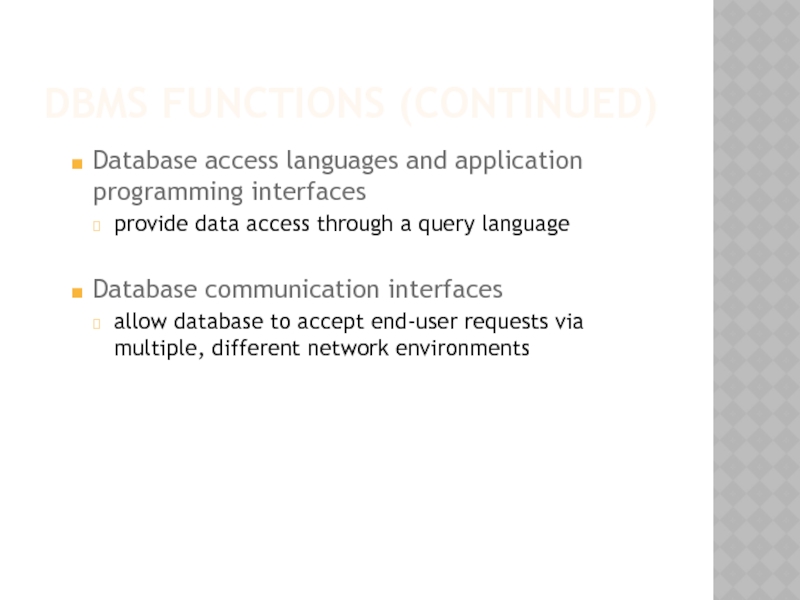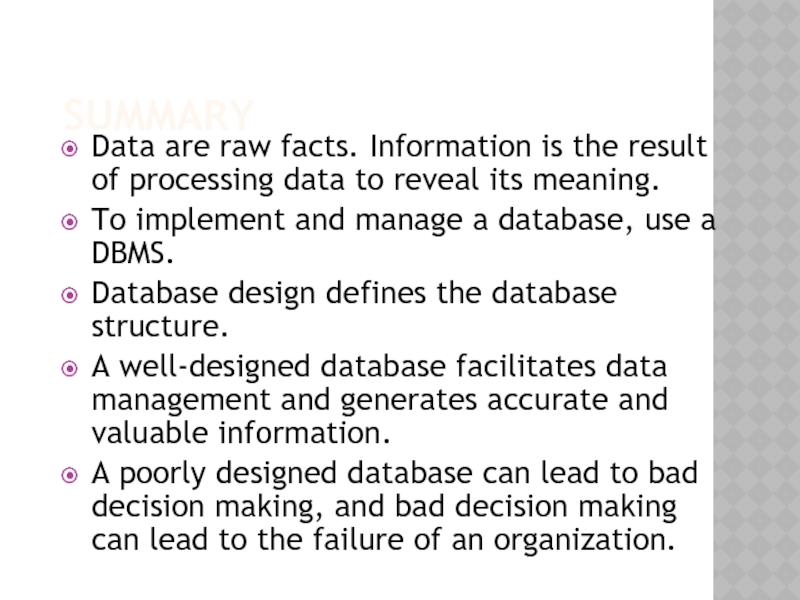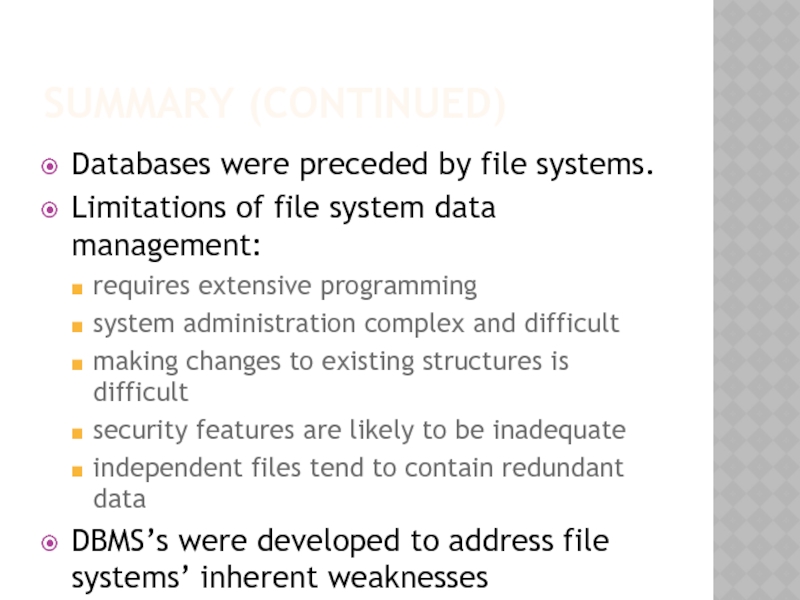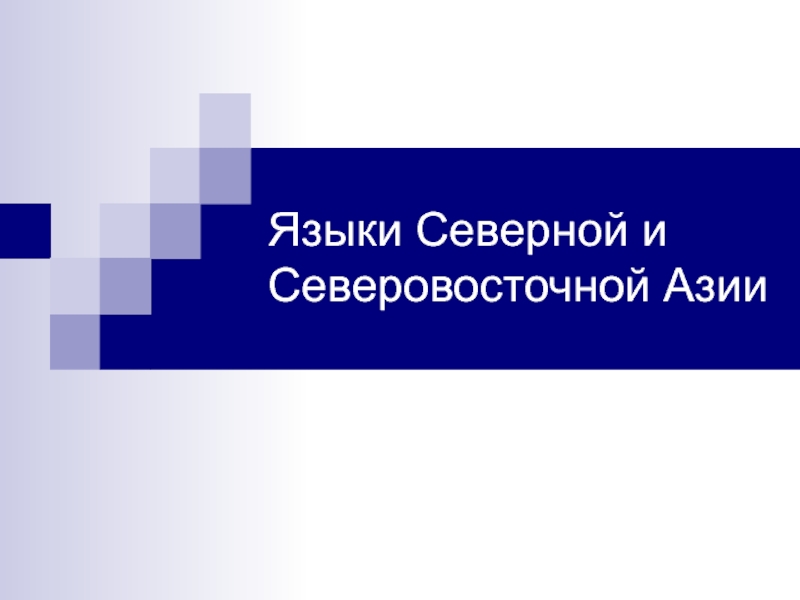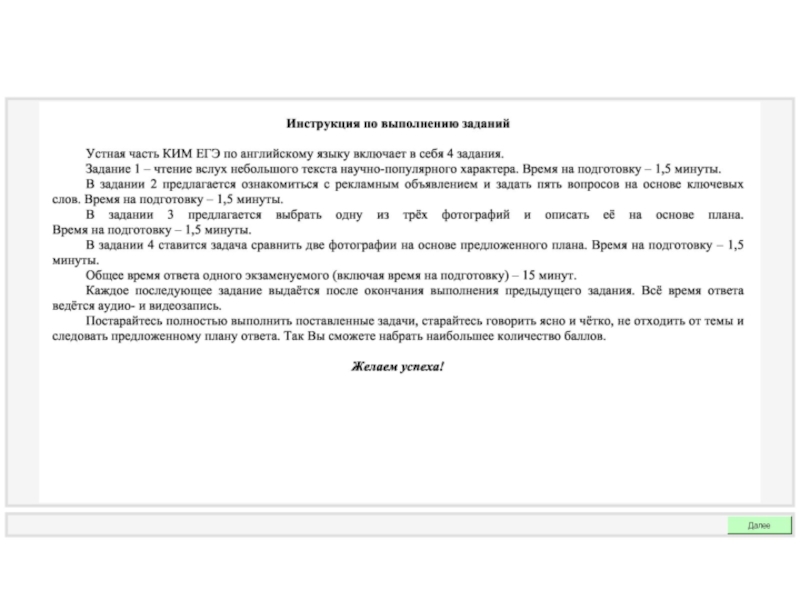Слайд 2Objectives
The difference between data and information
What a database is, what
the different types of databases are, and why they are
valuable assets for decision making
The importance of database design
How modern databases evolved from file systems
About flaws in file system data management
What the database system’s main components are and how a database system differs from a file system
The main functions of a database management system (DBMS)
Слайд 3Data vs. Information
Data:
Raw facts; building blocks of information
Unprocessed information
Information:
Data processed
to reveal meaning
Accurate, relevant, and timely information is key to
good decision making
Good decision making is the key to survival in a global environment
Слайд 4Introducing the Database
and the DBMS
Database—shared, integrated computer structure that
stores:
End user data (raw facts)
Metadata (data about data)
Слайд 5Introducing the Database and the DBMS (continued)
DBMS (database management system):
Collection
of programs that manages database structure and controls access to
data
Possible to share data among multiple applications or users
Makes data management more efficient and effective
Слайд 6Role and Advantages of the DBMS (continued)
End users have better
access to more and better-managed data
Promotes integrated view of organization’s
operations
Probability of data inconsistency is greatly reduced
Possible to produce quick answers to ad hoc queries
Слайд 7Types of Databases
Single-user:
Supports only one user at a time
Desktop:
Single-user database
running on a personal computer
Multi-user:
Supports multiple users at the same
time
Слайд 8Types of Databases (continued)
Workgroup:
Multi-user database that supports a small group
of users or a single department
Enterprise:
Multi-user database that supports a
large group of users or an entire organization
Слайд 9Types of Databases (continued)
Can be classified by location:
Centralized:
Supports data located
at a single site
Distributed:
Supports data distributed across several sites
Слайд 10Types of Databases (continued)
Can be classified by use:
Transactional (or production):
Supports
a company’s day-to-day operations
Data warehouse:
Stores data used to generate information
required to make tactical or strategic decisions
Often used to store historical data
Structure is quite different
Слайд 11Why Database Design is Important
Defines the database’s expected use
Different approach
needed for different types of databases
Avoid redundant data
Poorly designed database
generates errors leads to bad decisions can lead to failure of organization
Слайд 12Historical Roots: Files and File Systems
Managing data with file systems
is obsolete
Understanding file system characteristics makes database design easier to
understand
Awareness of problems with file systems helps prevent similar problems in DBMS
Knowledge of file systems is helpful if you plan to convert an obsolete file system to a DBMS
Слайд 13Historical Roots: Files and File Systems (continued)
Manual File systems:
Collection
of file folders kept in file cabinet
Organization within folders based
on data’s expected use (ideally logically related)
System adequate for small amounts of data with few reporting requirements
Finding and using data in growing collections of file folders became time-consuming and cumbersome
Слайд 14Historical Roots: Files and File Systems (continued)
Conversion from manual
to computer system:
Could be technically complex, requiring hiring of data
processing (DP) specialists
Resulted in numerous “home-grown” systems being created
Initially, computer files were similar in design to manual files
Слайд 15Historical Roots: Files and File Systems (continued)
Слайд 16Historical Roots: Files and File Systems (continued)
Слайд 17Historical Roots: Files and File Systems (continued)
DP specialist wrote
programs for reports:
Monthly summaries of types and amounts of insurance
sold by agents
Monthly reports about which customers should be contacted for renewal
Reports that analyzed ratios of insurance types sold by agent
Customer contact letters summarizing coverage
Слайд 18Historical Roots: Files and File Systems (continued)
Other departments requested
databases be written for them
SALES database created for sales department
AGENT
database created for personnel department
Слайд 19Historical Roots: Files and File Systems (continued)
As number of
databases increased, small file system evolved
Each file used its own
application programs
Each file was owned by individual or department who commissioned its creation
Слайд 20Historical Roots: Files and File Systems (continued)
Слайд 21Structural and Data Dependence
Structural dependence
Access to a file depends on
its structure
Data dependence
Changes in the data storage characteristics without affecting
the application program’s ability to access the data
Logical data format
How the human being views the data
Physical data format
How the computer “sees” the data
Слайд 22Data Redundancy
Data redundancy results in data inconsistency
Different and conflicting versions
of the same data appear in different places
Errors more likely
to occur when complex entries are made in several different files and/or recur frequently in one or more files
Data anomalies develop when required changes in redundant data are not made successfully
Слайд 23Data Redundancy
Types of data anomalies:
Update anomalies
Occur when changes must be
made to existing records
Insertion anomalies
Occur when entering new records
Deletion anomalies
Occur
when deleting records
Слайд 24Database Systems
Problems inherent in file systems make using a database
system desirable
File system
Many separate and unrelated files
Database
Logically related data
stored in a single logical data repository
Слайд 26The Database System Environment
Database system is composed of five
main parts:
Hardware
Software
Operating system software
DBMS software
Application programs and utility software
People
Procedures
Data
Слайд 27The Database System Environment (continued)
Слайд 28DBMS Functions
DBMS performs functions that guarantee integrity and consistency of
data
Data dictionary management
defines data elements and their relationships
Data storage management
stores
data and related data entry forms, report definitions, etc.
Слайд 29DBMS Functions (continued)
Data transformation and presentation
translates logical requests into commands
to physically locate and retrieve the requested data
Security management
enforces user
security and data privacy within database
Слайд 30DBMS Functions (continued)
Multiuser access control
uses sophisticated algorithms to ensure multiple
users can access the database concurrently without compromising the integrity
of the database
Backup and recovery management
provides backup and data recovery procedures
Data integrity management
promotes and enforces integrity rules
Слайд 31DBMS Functions (continued)
Database access languages and application programming interfaces
provide data
access through a query language
Database communication interfaces
allow database to accept
end-user requests via multiple, different network environments
Слайд 33Summary
Data are raw facts. Information is the result of processing
data to reveal its meaning.
To implement and manage a database,
use a DBMS.
Database design defines the database structure.
A well-designed database facilitates data management and generates accurate and valuable information.
A poorly designed database can lead to bad decision making, and bad decision making can lead to the failure of an organization.
Слайд 34Summary (continued)
Databases were preceded by file systems.
Limitations of file system
data management:
requires extensive programming
system administration complex and difficult
making changes
to existing structures is difficult
security features are likely to be inadequate
independent files tend to contain redundant data
DBMS’s were developed to address file systems’ inherent weaknesses
